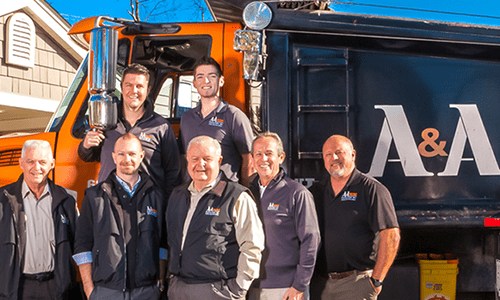For many people, meetings are a fact of life. Whether it’s a board or member meeting in your association, a volunteer meeting at your child’s school or a department meeting at work, being adept at participating effectively and managing meetings is a useful skill.
Sometimes one or two participants will dominate the discussion, steer it off topic and interrupt others, causing long, uncomfortable or unproductive meetings. Whether you’re the meeting chair or a participant, there are techniques you can use to help engage others, limit intrusions and minimize distractions.
- Table the discussion. If a conversation is getting particularly heated, the chair or a participant can move to table the discussion for a later date. This helps clear the air and allows for a calmer and more meaningful conversation at the next meeting. It also sends the signal that debates will be conducted rationally and with respect.
- Take it offline. When a meeting attendee takes a topic off course, everyone’s time is wasted. A good tool for the chair to use—or for another attendee to suggest—to get the meeting back on track is to invite the member to continue the discussion privately. Saying, “Let’s take this offline so we can talk more,” is an easy way to get back on the subject without alienating the sidetracked speaker.
- Use the agenda. The agenda is a useful tool for keeping a meeting moving efficiently. When a chair begins a meeting by saying, “We have a full agenda today,” he or she sets the stage for productivity. Periodically referring to the agenda during the course of the meeting keeps all attendees focused on the discussion. If the chair doesn’t have an agenda, ask the group pause a minute to create an informal agenda that simply lists the topics to be covered or goals to be accomplished.
- Call on members. To engage more reticent members of the group, and to balance the impact of more vocal participants, it’s helpful to call on members by name to ask for their opinions. “What do you think, Mary?” or “Do you have some input here, John?” ensures that all members are valued. And you don’t have to be the chair to ask for others’ opinions.
Board members and managers often dread the “Homeowners Forum” session of association board meetings. This is the part of the meeting where owners can bring up questions or concerns they have about the association. Though sometimes it can dissolve into “airing of grievances,” insults, and worse, arguments.
How can the board or management avoid unhelpful, unproductive or combative conversations in this session? The following is an example of a memo associations can include in their notification of board meetings to all owners. Feel free to use or modify as best accommodates your association.
Residents are encouraged to attend and observe association board meetings. If you’d like to bring an issue to the board’s attention, you’re welcome to speak during the homeowner forum—a time set aside just for you. So that everyone who attends has an opportunity for a meaningful exchange with the board, we ask that you observe the following guidelines:
- Although we’re all neighbors, this is a corporate business meeting. Please behave accordingly.
- If you’d like to address the board, please sign in when you arrive. You will be called in the order you entered. This allows the board to contact you if we need further information and to report back to you with an answer.
- The homeowner forum is an exchange of ideas, not a gripe session. If you’re bringing a problem to our attention, we’d like to hear your ideas for a solution too.
- To keep the meeting businesslike, please refrain from speaking if you’re particularly upset about an issue. Consider speaking later, speaking privately with a board member, or putting your concerns in writing and e-mailing them to the board.
- Only one person may speak at a time. Please respect others’ opinions by remaining silent and still when someone else has the floor.
- Each person will be allowed to speak no more than five minutes. Please respect the volunteers’ time by limiting your remarks.
- If you need more than five minutes, please put your comments in writing. Include background information, causes, circumstances, desired solutions and other considerations you believe are important. The board will make your written summary an agenda item at the next meeting.
- We may not be able to resolve your concerns on the spot, and we will not argue or debate an issue with you during the homeowner forum. We usually need to discuss and vote on the issue first. But we will answer you before—or at—the next board meeting.
It is our intent that these tips will help you have calm, focused and productive meetings, wherever they are!






 Cheryl Murphy
Cheryl Murphy 

